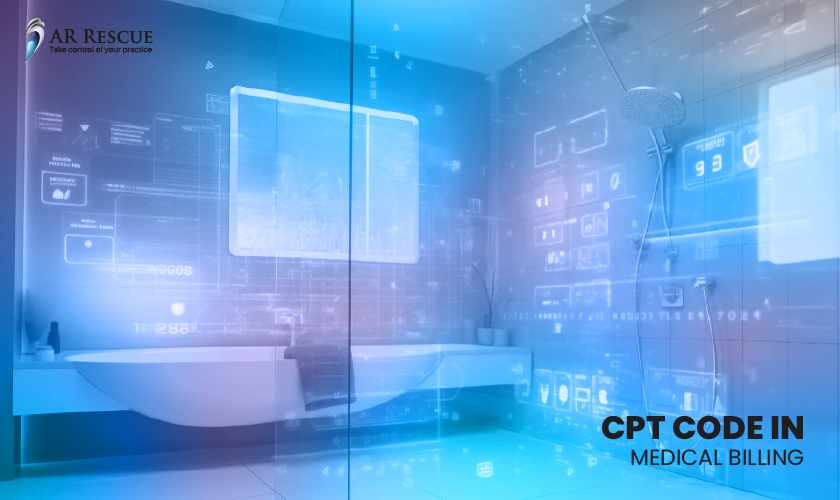A CPT code in medical billing is a standardized number representing a specific medical procedure or service.
Medical billing and coding are essential in the healthcare industry; they ensure accurate documentation and reimbursement for medical services.
Central to this process are CPT codes – known as Current Procedural Terminology codes.
What are they, and why are they so important?
Let us help you learn what CPT codes are, their meaning and significance, and why they are important in medical billing.
Table of Contents
What are CPT Codes?
CPT codes are a standardized system developed and maintained by the American Medical Association (AMA).
These codes provide a uniform language to describe medical, surgical, and diagnostic services healthcare professionals perform.
Each CPT code refers to a specific medical procedure or service — which results in efficient communication, accurate billing, and timely payment.
Get more information here.
The Importance of CPT Codes in Medical Billing
CPT codes are essential in medical billing for many reasons – they help healthcare providers document and describe their services, making medical records more transparent.
CPT codes also play a big role in identifying which services are covered by health codes and insurance policies.
This can help insurance companies verify the medical necessity and coverage of different procedures or services.
What Is the Difference Between a Standard and a Code?
A “standard” refers to guidelines, principles, or specifications that serve as benchmarks or references – this helps with uniformity and consistency.
A “code” is a collection of instructions, symbols, or representations to convey information or perform a particular function. It is a systematic arrangement of elements that define a specific concept, process, or operation.
Decoding CPT Codes – Number Code Meanings
CPT codes consist of five numeric digits, each representing a specific category or level of information.
The first digit represents the main section of the CPT book, such as Evaluation and Management or Anesthesia.
The second digit further narrows the category, while the third specifies the subcategory.
The fourth and fifth digits provide additional details about the procedure or service.
CPT Codes in Procedural Processing
CPT codes facilitate procedural processing, providing accurate documentation and billing for medical procedures.
Using CPT codes effectively communicates the nature and complexity of healthcare services.
This information is then used for insurance claims, reimbursement, statistical analysis, and research purposes.
CPT Codes and Health Codes – What Is Covered?
CPT codes serve as the basis for coding medical services and procedures, helping determine what is covered by health codes and insurance policies.
By using the appropriate CPT codes, healthcare providers ensure that patients receive the necessary coverage for the services rendered.
Using CPT codes correctly helps healthcare professionals get reimbursement approval.
Exploring Common CPT Codes in Medical Billing
There are a bunch of CPT codes used in medical billing.
For example:
99199 CPT code represents a non-listed special service or procedure, while CPT code 81513 is used for genetic testing.
Medical coders and billers must stay on top of the latest CPT codes to accurately document and bill for medical services.
Check the list for the latest CPT codes.
CPT Codes and Medicare
Among medical billing and reimbursement, Medicare and CPT codes are closely linked.
Medicare, the federal health insurance program in the United States, depends on CPT codes to reimburse providers.
Those participating in Medicare should thoroughly understand CPT codes and their relationship to Medicare.
Medicare uses the CPT coding system as a standard for reporting and billing medical procedures.
However, it’s important to note that Medicare may have specific guidelines, coverage policies, and reimbursement rates that providers must adhere to.
What Serves As A Basis For Coding?
- Current Procedural Terminology (CPT) codes. These codes describe specific procedures and services healthcare providers provide, allowing for standardized reporting and billing.
- International Classification of Diseases (ICD) codes. Using these codes, diseases, disorders, and injuries can be categorized and classified according to their diagnosis.
- Healthcare Common Procedure Coding System (HCPCS) codes. HCPCS codes complement CPT codes and are mainly used for billing products, supplies, and services not covered by CPT codes.
- National Drug Codes (NDC). NDCs are codes assigned to medications, which facilitate identification and billing.
- Revenue codes. Revenue codes help classify different types of services and procedures within hospital environments.
- The modifiers provide extra information or specify certain aspects of a procedure or service.
- Local Coverage Determinations (LCDs). Medicare Administrative Contractors establish LCDs to detail specific procedures and services’ coverage and coding requirements.
CDM Coding
Another important component in medical billing is Charge Description Master (CDM) coding, which helps with revenue cycle management.
It requires assigning the appropriate codes to each item or service listed in the CDM. These codes are typically based on existing code systems like CPT, HCPCS, and NDC.
Hospitals can accurately capture and bill charges by assigning the appropriate codes to each item or service in the CDM.
Explain When HCPCS Coding Would Be Used
HCPCS codes cover items and services not included in the CPT coding system, like durable medical equipment, supplies, and certain medications.
HCPCS codes are important when dealing with Medicare and Medicaid claims because they provide detailed information about the specific items or services provided.
CPT Codes in Specialized Medical Fields
CPT codes cover a variety of medical procedures.
For instance, specific CPT codes exist in neurology for procedures like EEG (electroencephalogram) and EMG (electromyography).
Similarly, audiology has its own set of CPT codes for hearing tests and evaluations.
Using specialty-specific CPT codes ensures accurate billing and documentation for specialized medical services.
Conclusion
Properly assigning CPT codes ensures clarity, compliance, and efficient processes.
By staying current with coding intel and sticking to approved code services, healthcare providers can easily make sense of medical billing.
With its expertise in coding and clinical set knowledge, AR RESCUE provides reliable coding services to deliver accurate and compliant code services.
Trusting in coding experts is vital for maintaining the bottom line of healthcare organizations.

